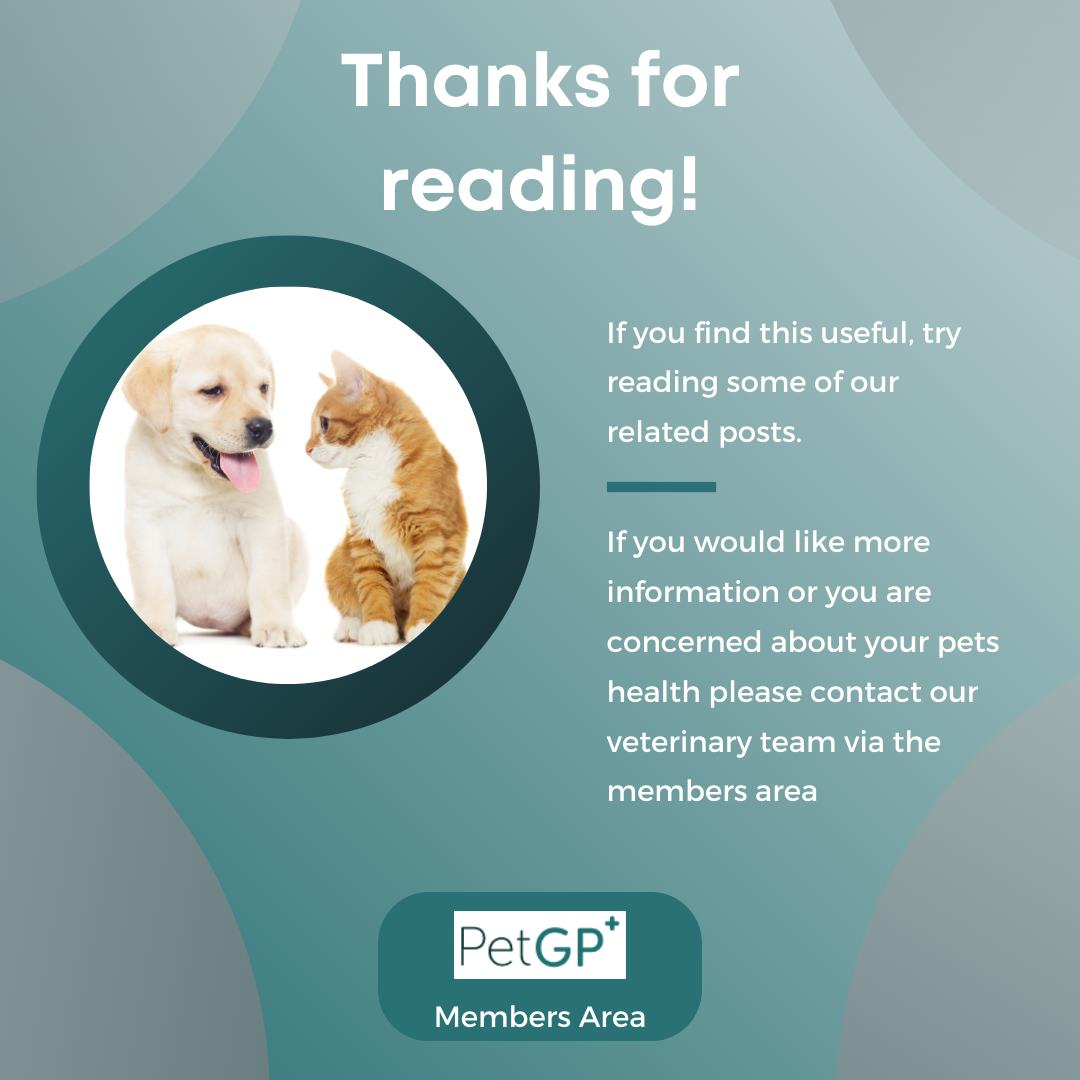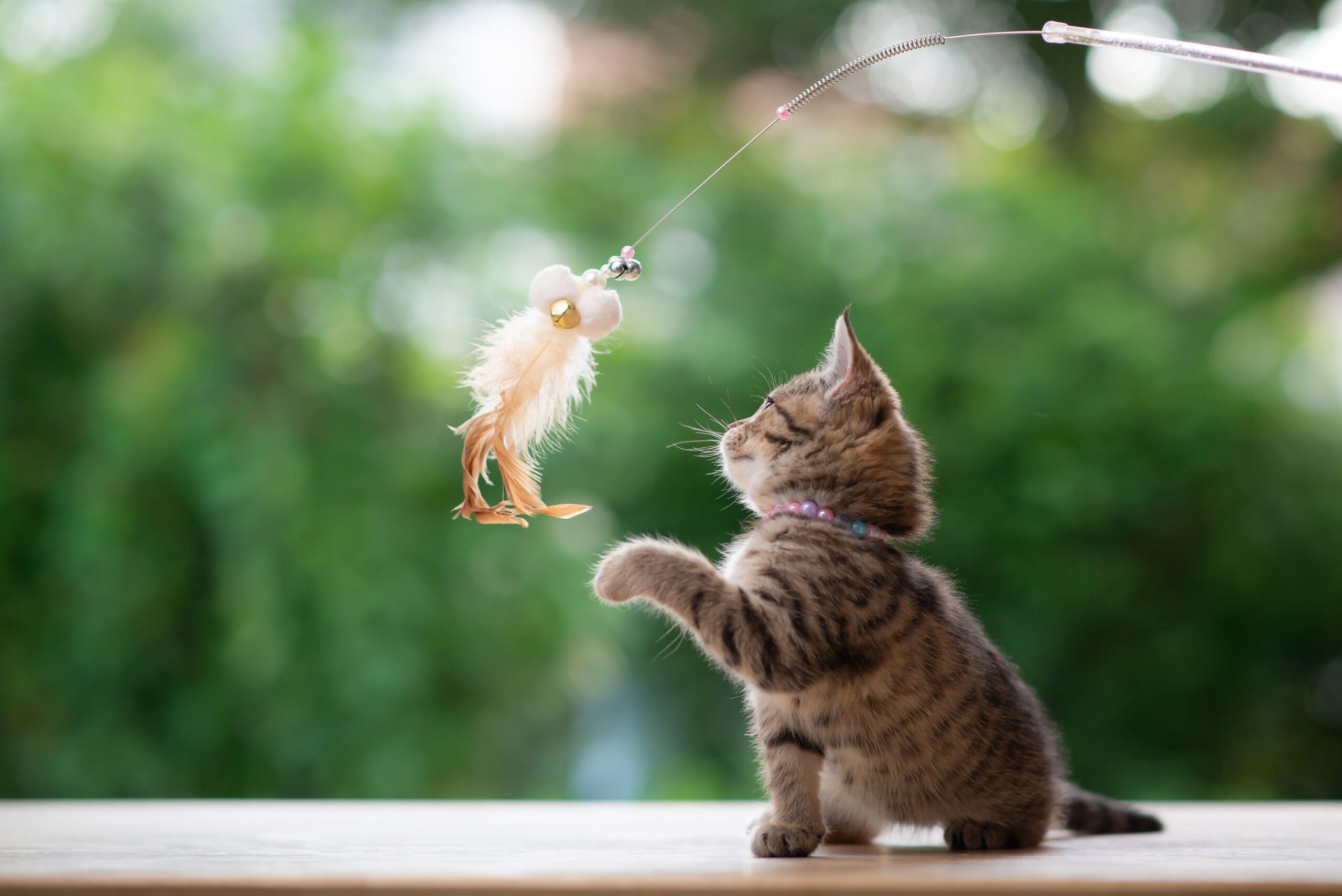What is my pets ideal weight?
Whilst it is always useful to know how much your pet weighs, it is not so easy to know what an ideal weight for your pet is. We can use body condition scoring to help assess and achieve an ideal bodyweight for your pet.
There are 3 basic body condition scoring processes:
A 3-point hand scoring process. This is ideal for those new to body condition scoring and for use at home.
A 5-point body condition score. This is used by pet professionals such as groomers and pet stores.
A 9-point body condition score. Veterinary professionals such as vets and veterinary nurses use this assessment. It gives the most detailed analysis.
An assessment of weight or body condition can be made by looking at the shape of your pet from the side and from above. Following this feel areas such as the ribs, spine, and hip bones. Finally once the assessment has been made, a scoring system can be used to see if they are underweight, overweight, or just right.
Home Weight Assessment
At home you need to be able to decide if your pet is over ideal weight, under ideal weight or approximately ideal weight. This can be a confusing process. Weight charts are easy to access. However, these are of very limited use as the average weight for a breed is given only. The average size of a breed takes no account of individuals size and conformation. In the same way a ballerina and rugby playing human may both be their ideal weight but completely different sizes our pets can be too.
The most useful information to an owner is if their pet is under ideal weight, ideal weight or over ideal weight. This can be assessed at home without the use of weighing scales and complex charts. In summary our recommendation is that a 3-point body condition scoring process is completed monthly and recorded for later evaluation. An explanation of a basic body condition score process is below for you to use.
9-point / Veterinary body condition scoring
This is the most in depth of the 3 body condition scoring processes. It is used by veterinary professionals and can be complicated to complete as an owner. You can attempt this at ome but we recommend starting with the 3-point assessment first.
As veterinary clinicians we use a score out of 9. We aim for an ideal weight score of 4-5. A score below this means your pet is under ideal weight. A score above this means your pet is increasingly over ideal weight leading to very obese at a score of 9.
Score of 1. Pet is very thin and severely under ideal weight.
Ribs, spine, and hip bones all sticking out and easily seen from a distance. This indicates very little muscle mass. The pet has a very tucked up waist. Your pet looks very underweight.
Score of 2. Pet is thin and under ideal weight.
You can visualise the ribs, spine, and hip bones. There is no obvious body fat. Some muscle mass is present but the pet looks thin. You can see a tuck up and in at the waist.
Score of 3. Pet is a little on the thin side.
Ribs, spine, and hip bones may be slightly visible. They are not as obvious but very easily felt. You can see a tuck up and in at the waist.
Score of 4. Ideal weight, nice and slim.
It is possible to feel the ribs, spine, and hip bones. They are nicely covered in tissue. This indicates a good muscle mass and a nice defined waist is present.
Score of 5. Good weight, nice and trim. Close to ideal weight.
You are able to feel the ribs, spine, and hip bones easily. They have minimal covering. A nice defined waist can be easily seen. A good level of muscle mass is present.
Score of 6. Getting a little on the heavy side, would benefit from watching those calories.
You are able to feel the ribs, spine, and hip bones. These have an obvious fat covering. A good amount of muscle mass is present. The waistline starting to lose some definition.
Score of 7. Getting a bit over ideal weight, may be time to consider a diet.
You can feel the ribs, spine, and hip bones but with difficulty. Too much of a fat covering is present. Fat deposits are becoming present at the tail base and on the back. You are unable to visualise a waist line.
Score of 8. Significantly over ideal weight, oh dear things are getting a bit out of hand, time to get some help with the diet.
You are unable to feel the ribs, spine, and hip bones. A very heavy fat covering is present. You can not see a defined waist line. Your pet may be starting to look ‘potbellied’. Fat deposits in other areas are present, such as back and tail base.
Score of 9. Pet is clinically obese and there is an increased risk to pets’ health.
Unable to feel ribs. Rounded abdomen and further fat deposits to neck, chest, and limbs.
What to do with the information
Under ideal weight pets need to be assessed by a Vet as soon as possible. These can be many causes for weight loss but it is a condition that needs to managed closely. Over ideal weight is also a cause for concern, but less urgently in most cases. Discuss weight management with your veterinary healthcare team during your next visit.
I want to know more
Your veterinary staff will a the 9-point body condition score weight assessment. It may be easier to start with a 3-point assessment at home. All assessments give the same outcome, it is the detail within the outcome that changes.
You will find more details on the different scoring processes by following the links below.5-point body condition score - cat
5-point body condition score - dog





